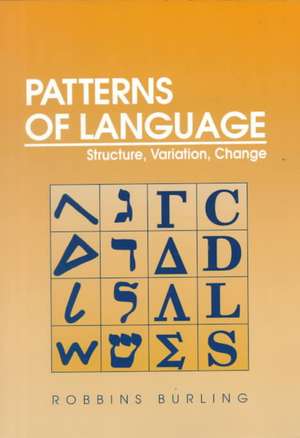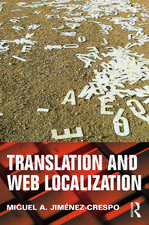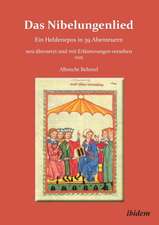Patterns of Language: Structure, Variation, Change
Autor Robbins Burlingen Limba Engleză Paperback – 29 feb 1992
Key Features
* Integration of variation and change
* New treatment of functional and typological approaches to syntax
* Emphasis on the widest possible diversity of languages
* Offers alternative ways of looking at language
Preț: 378.27 lei
Nou
Puncte Express: 567
Preț estimativ în valută:
72.39€ • 75.00$ • 60.42£
72.39€ • 75.00$ • 60.42£
Carte tipărită la comandă
Livrare economică 14-28 martie
Preluare comenzi: 021 569.72.76
Specificații
ISBN-13: 9780121449209
ISBN-10: 0121449203
Pagini: 476
Dimensiuni: 164 x 233 x 21 mm
Greutate: 0.68 kg
Editura: Emerald Group Publishing Limited
ISBN-10: 0121449203
Pagini: 476
Dimensiuni: 164 x 233 x 21 mm
Greutate: 0.68 kg
Editura: Emerald Group Publishing Limited
Public țintă
Upper division and graduate students in linguistics.Cuprins
The Uses of Language. Words: Meaning and the Lexicon. Morphology. Lexical Variation and Change. Appendix: Language Families of the World. Sounds: Phonetics. Phonology. Phonological Variation. Variation Through Time: Phonological Change. Sentences: Generative Grammer. The Functions of Syntax. Syntactic Typology. Syntactic Variation. Syntactic Change. Growth. Pidgin and Creole Languages. First and Second Language Learning. Language and the Human Species. Language and Civilization. Bibliographic Notes. Bibliography. Index.
Recenzii
"It seems to me the best current text of its kind; teachers will find it a pleasure to use. The book reflects several of Burling's special strengths: his long experience in teaching this topic, his expert knowledge of current developments in the field; his first-hand research in such interdisciplinary fields as social dialect, and his anthropologist's emphasis on the cultural context of language. The focus is balanced and coherent; the perspective is up-to-date without falling into trendiness; the examples are a pleasing mix of material from familiar languages and from interestingly exotic ones. The writing is graceful and clear."
--William Bright, UNIVERSITY OF COLORADO, Boulder
--William Bright, UNIVERSITY OF COLORADO, Boulder
















